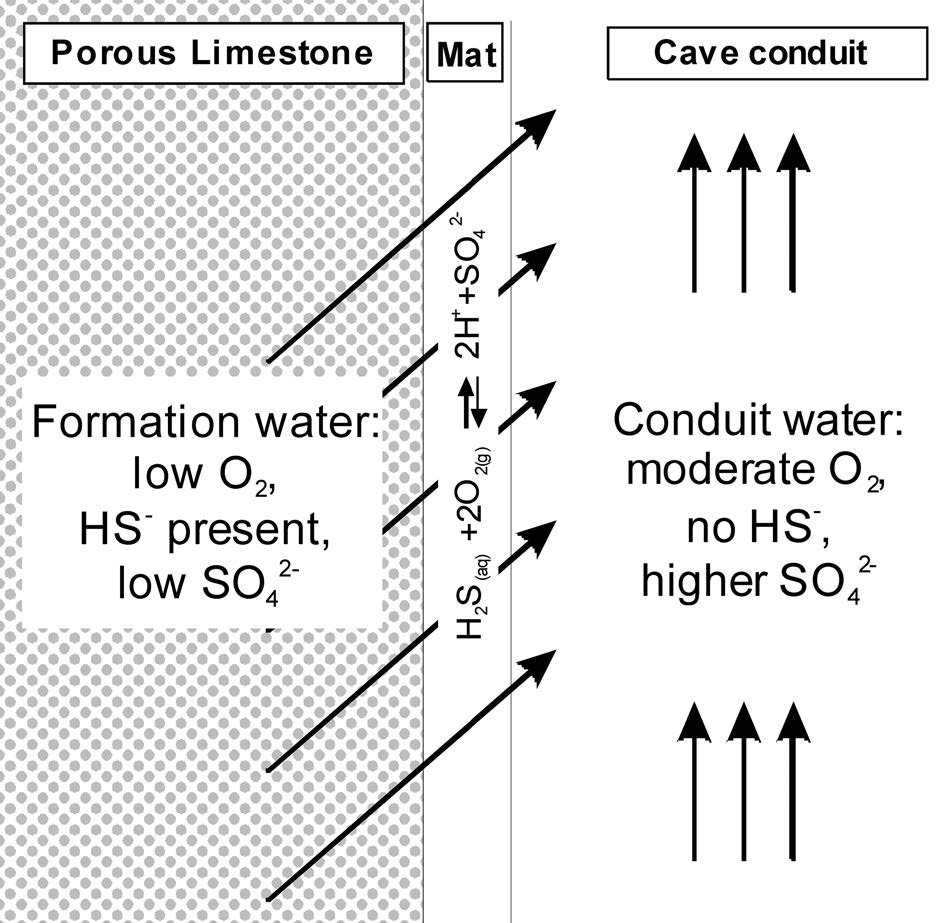Biological Control on Acid Generation at the Conduit-Bedrock Boundary in Submerged Caves: Quantification through Geochemical Modeling
DOI:
https://doi.org/10.3986/ac.v42i2-3.663Ključne besede:
calcite dissolution, microbial sulfide oxidation, geochemical modelPovzetek
No-mount Cave, located in Wekiwa Springs State Park in central Florida, USA, is an aphotic, submerged, freshwater cave in which large colonies of sulfur-oxidizing bacteria live in filamentous microbial mats. Upwardly discharging groundwater enters the cave from the Upper Floridan aquifer, specifically the Eocene-aged Ocala Limestone. We undertook a combined field, laboratory, and modeling study in which we sought to determine the amount of calcite dissolution attributable to the generation of protons by microbially mediated sulfide oxidation. The chemical compositions of groundwater within the limestone formation collected through a newly designed sampling device and of water in the cave conduit were used in geochemical modeling. We used the reaction-path model PHREEQCI to quantify the amount of calcite dissolution expected under various plausible scenarios for mixing of formation water with conduit water and extent of bacterial sulfide oxidation. Laboratory experiments were conducted using flow-through columns packed with crushed limestone from the study site. Replicate columns were eluted with artificial groundwater containing dissolved HS- in the absence of microbial growth. Without biologically mediated sulfide oxidation, no measurable calcite dissolution occurred in laboratory experiments and no additional amount of speleogenesis is expected as formation water mixes with conduit water in the field. In contrast, significant calcite dissolution is driven by the protons released in the biological transformation of the aqueous sulfur species. Although a range of results were calculated, a plausible amount of 158 mg Ca2+ released to conduit water per liter of groundwater crossing the formation-conduit boundary and mixing with an equal volume of conduit water was predicted. Our modeling results indicate that significant cave development can be driven by microbially mediated sulfide oxidation under these hydrogeochemical conditions.ž
Keywords: calcite dissolution, microbial sulfide oxidation, geochemical model.
Prenosi

Prenosi
Objavljeno
Kako citirati
Številka
Rubrike
Licenca
Avtorji jamčijo, da je delo njihova avtorska stvaritev, da v njem niso kršene avtorske pravice tretjih oseb ali kake druge pravice. V primeru zahtevkov tretjih oseb se avtorji zavezujejo, da bodo varovali interese založnika ter da bodo povrnili morebitno škodo.
Podrobneje v rubriki: Prispevki




